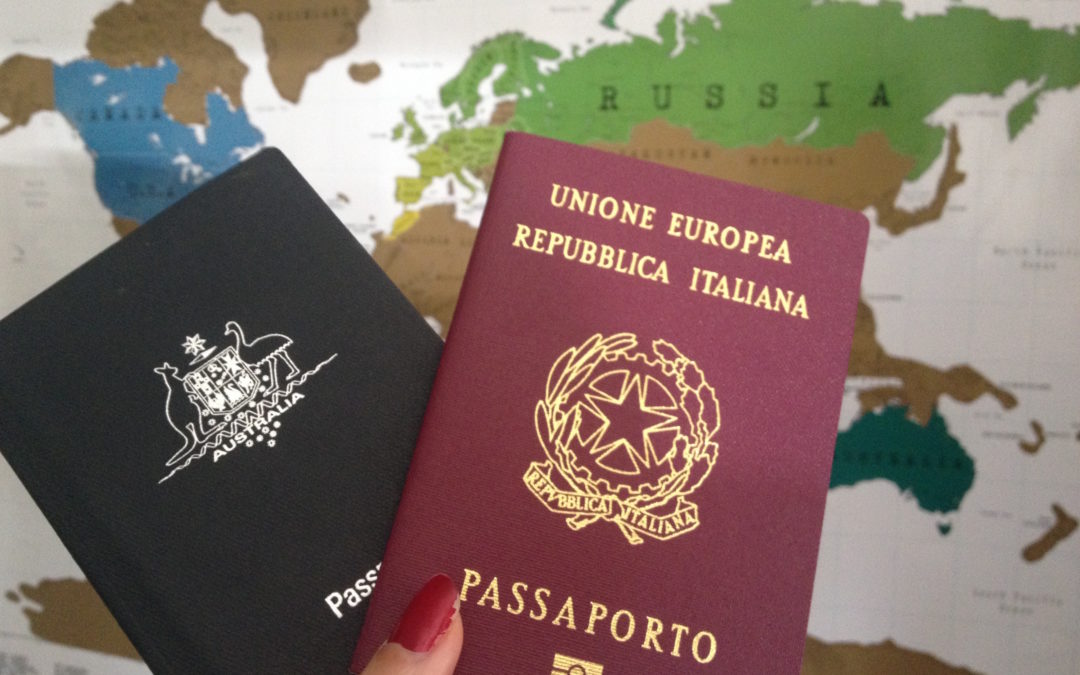Border police and airlines do not handle travelers with multiple passports.
They expect each traveler to have ONE passport. Showing two (or more) passports at border checks led to bad results for many people I met in my experience as an immigration lawyer: border officers may easily delay you and let you miss a connecting flight.
What should you know to avoid any problem at European border checks?
(This article was updated on Feb 29, 2024)
#1. European countries have immigration checks on EXIT, too!
Most countries in the world have immigration checks only on their entrance. Not in Europe.
Most European States are tied to the Schengen Agreement. They share external borders and the area within, a common space uniting more European countries, is called the Schengen area. Each traveler is expected to show the passport to the immigration police upon arrival at any point of entry of the Schengen area and also at any point of exit.
Schengen states (27): Austria, Belgium, Croatia, Czech Republic, Denmark, Estonia, Finland, France, Germany, Greece, Hungary, Italy, Latvia, Lithuania, Luxembourg, Malta, Netherlands, Spain, Slovakia, Slovenia, Sweden.
Additionally, the non-EU States Iceland, Norway, Switzerland and Liechtenstein also have joined the Schengen Area.
# 2. You are supposed to show only ONE passport.
If you have more than one passport, which passport is it best to use?
If you are traveling to Italy and have an Italian passport or ID card, Italian law requires you to use that to identify yourself. Most states in the world have a similar policy.
– If you have an Italian passport
1. Always show your Italian passport (and only that) upon entering or leaving Italy, at any airport or another border crossing.
2. If you arrive at any point of entry in the Schengen area other than Italy (and you do not have a passport of that particular country), again show your Italian passport. That is because Italy has privileged relations with all European Union countries.
Italian citizens can enter the EU and EAA countries freely, together with their family members. Follow the signs for European citizens and show your Italian passport.
– If you do not have an Italian passport
If you are traveling to Italy and do not have an Italian passport, the most convenient choice is to use the passport of the state with which Italy has special border policy agreements, such as one of the countries of the Schengen area (see list above). That allows you to enjoy free access without the limitations for non-EU citizens.
Other convenient passports are those of states for which Italy has no visa requirement, at least for short stays. The list varies from year to year. You can check whether you need a visa according to your passport and country of usual residence: official visa website of the Italian Ministry of Foreign Affairs.
How does the 90-days rule work with 2 passports?
Even if you are “visa-free”, a 90-days limit applies. The Schengen area policy is such that you can stay for a maximum of 90 days within the last 180-days period from your entry date (counting backwards). Check my article here for more details.
If you have more than one passport and none is of a Schengen state (listed above), the same rule applies. Each person has a 90 days stay limit within the 180-days period.
#3. Ticket data = passport data
When bookign your flight, write your data carefully according to what is written on your passport when traveling to Italy and to Europe.
Border police checks start with matching your passport data (including the passport number) with your travel ticket, as well as an EU Passenger Locator Form and whatever other document they may request at any given time of the year.
If the border police notice any difference, a deeper and more time-consuming control will take place. The outcome depends on the law of the state in which you find yourself at the time of entry. Moreover, you can be denied boarding if your name on it differs in anything from that on the registered passport in your flight booking.
Not only the passport number on your travel ticket and forms can be an issue. In some cases, the same person’s name and last name may vary from one passport to the other. For example, a married woman’s last name may be registered differently from country to country. Whilst many states apply the husbands’ name to a wife, in Italy the maiden name usually applies to all ID documents. Moreover, the spelling of the name may vary, according to the law of the state that issued the passport. Italy applies the name(s) and spelling exactly as in the concerned person’s birth record. The name on the birth record match exactly the name on the passport.
What if you already booked your trip with your other passport?
The risk is high that you will be denied boarding. So it is important to change your ID data on your travel ticket.
Most airlines allow you to change your data until checking in (for a fee). If you do not manage to obtain the change online or via the airline customer care before your departure date, you can obtain the changes at the check-in counter or at the airline office in the airport.
RECAP!
Show your Italian passport BOTH at entry and exit points. Your hassle-free journey starts with your booking. Remember to write the data on your Italian passport.
Would you like to know more? Download my free SPECIAL 2 PASSPORT TRAVEL KEY
Content:
-
Which checks are you meeting on your way IN and on your way OUT of Europe?
-
Which passport are you supposed to show at border checks outside of Europe, as an Italian dual citizen?
-
More details on how does the 90-days rule work with 2 passports

PASSPORTS TRAVEL KEY

My daughter holds dual citizenship, Dutch and Italian, and resides in Italy. She has a Dutch passport and an Italian Identity Card. This summer she is travelling to the UK. Can she use her Dutch passport or should I get her an Italian passport? Because I read it’s better to travel with the passport of the country you are travelling from and to….
Thank you for your insightful question, Iris! Indeed, it’s generally advisable to use the passport of the country you’re traveling to or from. However, for entering Italy or other Schengen states, citizens need only an ID card, not a passport. So, for your daughter’s trip to the UK, she can use her Dutch passport for entry into the UK and her Italian ID card for re-entry into Italy/Schengen. Keep in mind, there are no border checks when leaving the UK for Schengen areas. Should the UK authorities inquire at any point, even within the UK, she should present her Dutch passport. 👍 🇳🇱 🌷
Thanks a lot for your response, Lara.